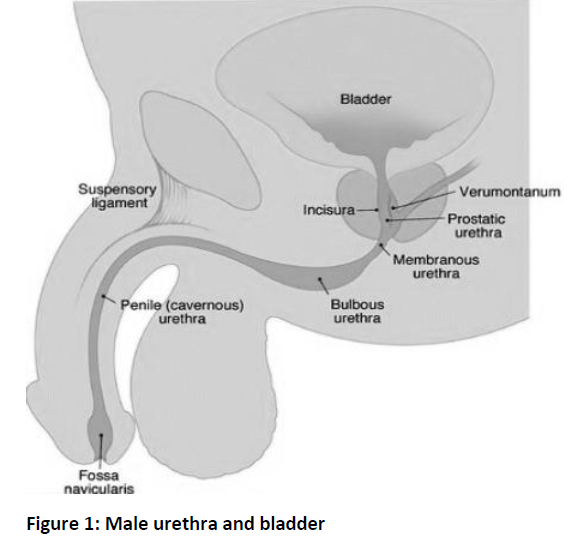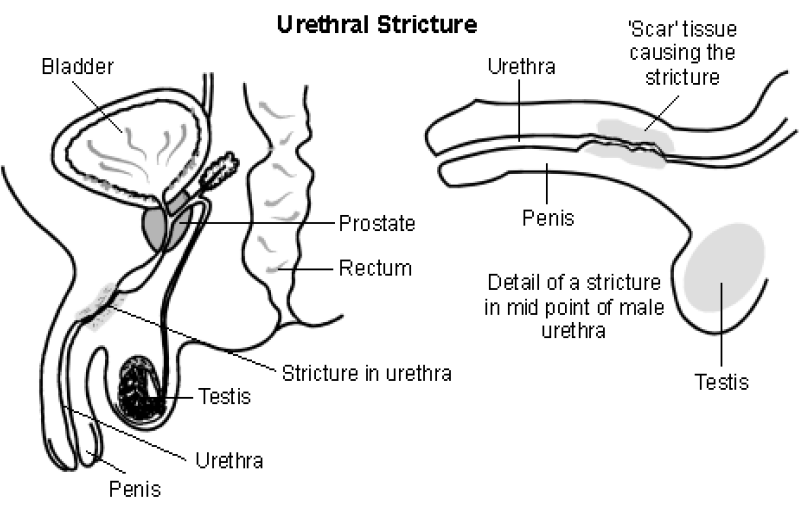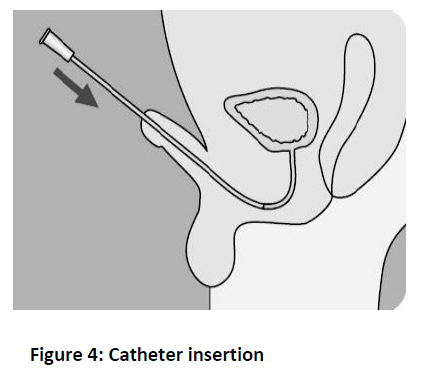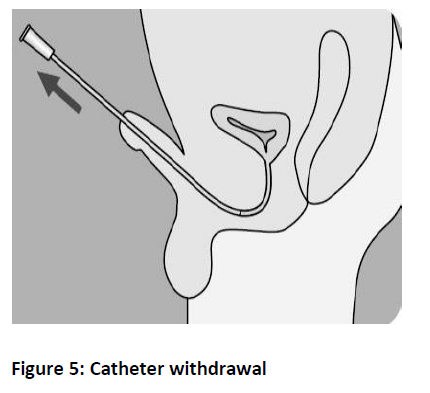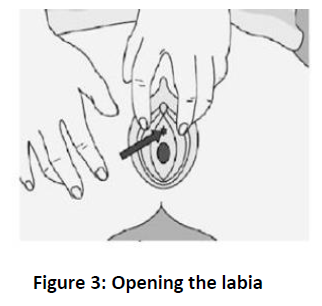Intermittent Self-Dilatation (ISD) for adults
This page gives you information about performing Intermittent Self-Dilatation (ISD).
On this page
-
What is ISD?
-
How does a urethral stricture develop?
-
Treatment of urethral strictures
-
Benefits of ISD
-
Risks and complications of ISD
-
Frequently asked questions
-
Instructions for performing ISD for men
-
Instructions for ISD for women
-
Common problems experienced
-
Your catheter information
-
Contact information
What is ISD?
Intermittent Self-Dilatation (ISD) is the process of regularly stretching the urethra to reduce the risk of urethral strictures (a narrowing of the urethra). Dilatation involves passing a lubricated catheter (tube) into the urethra to stop it from narrowing.
The procedure of self-dilatation is carried out by yourself, in your own home. It is a safe and simple procedure which will reduce the risk of your stricture recurring.
The urethra is the tube which urine is passed through from the bladder to the outside of the body
(see Figures 1 and 2).
How does a urethral stricture develop?
A urethral stricture can develop when the delicate lining of the urinary tract becomes damaged. A urethral stricture can occur anywhere along the length of the urethra.
In women, the urethra is flexible and short in length, about 4 to 5 cms therefore, strictures and the need for ISD is uncommon but not unusual.
When the damaged lining of the urethra heals, scar tissue can form, this causes the narrowing in the urethra.
Damage to the urethra can also be caused by:
- Infection
- Injury
- Past catheterisation
- A congenital abnormality present at birth.
Symptoms of a urethral stricture
- Difficulty in passing urine.
- Having to strain to pass urine.
- Difficulty in starting to pass urine.
- A slow urinary flow – taking a long time to pass urine.
- The urinary flow appears to spray outwards and even splits into 2 streams.
- Getting up in the night to pass urine.
- Incomplete bladder emptying.
- Repeated urinary infections.
- Suffering with continuous urinary incontinence leaking.
Treatment of urethral strictures
Your medical practitioner or consultant will advise you about the options available to best manage your stricture.
Urethrotomy is an operation performed under a general anaesthetic (while you are asleep) to correct a urethral stricture. A small incision/cut is made to open up the stricture in your urethra; this allows the urethra to widen allowing the urine to pass easily.
Urethral dilatation is another surgical option which involves stretching the urethra under a local or general anaesthetic.
In some cases, a urethral catheter is required for 1 to 2 weeks after the operation to allow healing.
Some patients are required to perform ISD after an operation on their stricture to prevent further scar tissue developing and causing another stricture. ISD is also used to reduce the need for a surgical procedure.
Benefits of ISD
- Reduces the risk of the urethral strictures returning.
- Reduces repeated urethral operations.
- Prevents urinary tract infections occurring from incomplete bladder emptying caused by the stricture.
- Reduces difficulties experienced with passing urine caused by the stricture.
Risks and complications of ISD
The risks involved from ISD are low:
- Bleeding in the urethra can be caused from difficulty inserting the catheters.
- Pain or discomfort can be experienced when inserting the catheters.
- Urinary infections can be caused if the catheters are not inserted correctly.
The most likely complication is infection; however, this is usually less than the risk of infection associated with the bladder not emptying itself completely (which often happens when a stricture is present).
Frequently asked questions
Will the procedure be painful?
No, but some people experience a slight stinging sensation and a feeling of wanting to pass water. This is normal and usually wears off after a few days.
What if I develop an infection?
You may develop an infection when you first start ISD. This does not mean that you have done anything wrong. Symptoms of a urine infection may include, having a high temperature of 38ºC, a stinging sensation when passing urine, feeling unwell or having blood in the urine. If you suspect that you have an infection, please contact your GP.
How long will I need to perform ISD?
ISD is a long-term treatment to reduce the risk of urethral strictures from recurring. If the ISD treatment is stopped then the risk of the stricture returning is increased. Most people continue the treatment for the rest of their lives.
How often will I need to perform ISD?
Your health care practitioner will advise you on how often you will need to perform ISD. This will vary depending on where the urethral stricture is and the severity of the stricture. Some people perform ISD daily while others may perform ISD weekly.
How will I obtain the catheters?
Your health care practitioner will organise a prescription from your GP for the catheters. The catheters can be delivered to your home or you can collect them from your local pharmacy. Your health care practitioner will discuss this with you.
How will I dispose of the catheters?
The catheters are single use and are disposed in your general waste.
What type of catheter will be used for the ISD?
There are a variety of catheters available. You will be involved in choosing a catheter that best suits your needs. All catheters are designed to be discrete and easy to use.
What if I travel or go on holiday?
Performing ISD should not restrict your travel or holiday choices but you should make sure that you order and take enough catheters for the length of your trip. A GP’s letter may be useful if you are travelling abroad, avoiding any difficulties with customs.
Can I still have sex?
Yes, performing ISD should not affect your sex life.
Instructions for performing ISD for men
ISD is known as a clean procedure, this means normal washing of the genitals is enough preparation before you start the ISD. Positions for the procedure are an individual choice, you may prefer to stand, lie or sit.
- Clean your genital area with a mild soap and water.
- Wash your hands thoroughly.
- Prepare the catheter as per the manufacturer’s instructions. Place the catheter so that you can reach it easily. Position yourself over the toilet or alternatively have a container in which to collect the urine if you are draining the bladder.
- Pull back the foreskin (if present) and gently pull the penis into an upright position (Figure 4).
- Insert the catheter gently into the urethra opening. The catheter should insert easily with gentle pressure. The urethral is 20 cms in length. You will need to insert the catheter until you have passed through the stricture (your health care practitioner will advise you on this). You may feel some resistance as the catheter stretches the stricture, but this should not be painful.
- If your stricture is at the far end of the urethra, you will need to pass the catheter right into the bladder. As you do this you may feel some resistance as the catheter passes through the prostate. At this point, coughing or passing urine can help. Urine will drain as you enter the bladder.
- When you are sure you have passed through the stricture you can withdraw the catheter slowly, remembering to gently pull the penis upwards as you slide the catheter out (see Figure 5).
- Return the foreskin to the normal position.
- Dispose of the catheter in a sealed plastic bag and place in your household bin.
- Always urinate after completing your dilatation. This will help to reduce the risk of infection.
- Wash your hands.
Instructions for ISD for women
Clean your genital area with mild soap and water.
- Wash your hands thoroughly.
- Prepare the catheter as per the manufacturer’s instructions. Place in a position of easy access near the toilet or along with a jug if you are emptying your bladder with the catheter.
- Open the genital folds of skin (labia) with your thumb and fore finger to expose the urethra.
- Hold the catheter half way down the tube in your preferred hand. Do not touch the end of the catheter to be inserted into the urethra.
- Once you have located the urethral opening, insert the catheter, aiming upwards. The urethra is about 4 to 5 cms in length. If you find it hard to insert the catheter cough or try to pass urine, this can make it easier.
Common problems experienced
There is blood in my urine when I have completed ISD
A small amount of blood when you first start to catheterise/dilate is normal. This will improve after the first few weeks. If the blood loss is large, you should contact your GP for advice. If this happens after you have been catheterising for some time, take a urine sample to your GP’s surgery to rule out an infection.
It stings when I pass urine
You may have a urine infection. Take a urine sample to your GP’s surgery for testing.
I experience a stinging sensation when I catheterise
This is a common sensation when you first perform ISD. If this continues, it may be worth trying a different brand of catheter. Discuss this with your health care practitioner.
I am unable to perform ISD when I have previously had no problems
Do not worry, sometimes this can happen. Try to relax; a warm bath may be helpful. If you are still unable to perform ISD, contact your health care practitioner or GP for advice.
No urine drains out of the catheter
(This only applies if you are catheterising to empty your bladder)
- Your catheter may not be fully in the bladder.
- The bladder may be empty. Try again later, if there is still no drainage, contact your health care practitioner or GP for advice.
I cannot get the catheter out
Try to relax; you are most likely experiencing a bladder spasm. A warm bath can be helpful. If this does not help, contact your health care practitioner or GP for advice. Medication to relax the bladder may be given to prevent this from happening again.
Your catheter information
Your healthcare professional will provide details of your catheter information, such as; type, size, order code, and instruction for use.
Contact information
Your health care practitioner should provide their contact details for the doctor, district nurse, and pharmacy.
If you have any questions or concerns, please contact:
Gloucestershire Bladder and Bowel Health
Cheltenham General Hospital, Oakley Suite (2nd floor Centre Block), Sandford Road, Cheltenham GL53 7AN
Tel: 0300 422 5305
Monday to Friday, 8:30am to 3:30pm,
